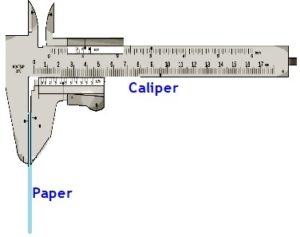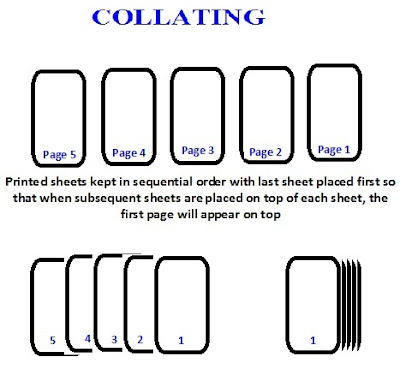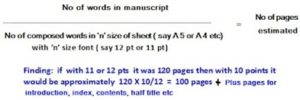
Alphabet- C

1. Caliper: It is an instrument to Measure the thickness of the paper which is normally expressed in units called micron (1mm equals 1000 microns). Also available is a tabletop model(caliper) with which the thickness of the paper is measured in several areas to work out the average thickness of the paper. Some units measure the thickness using hand held micrometers.

2. Coated Paper: Some of the papers are coated with some material to give gloss and smoothness to their surfaces while manufacturing the paper. The coating material is something like clay and other similar substances that improves reflectivity and ink holdout. Mills produce coated paper in categories like cast, gloss, dull and matte. Example of coated paper includes Art paper used for the production of the magazines and PVA, melamine or gelatin sized paper used in the Currency note printing units. Please note that the coated paper is different from that of varnish coated paper which is used in packaging industries. The varnish coating is done over the surface of the paper on printing or varnishing machines after the paper is printed. If however large scale of order is placed, the paper mills themselves arrange for varnishing before the reel is wound.
3. Collate: A finishing term which refers to the process of gathering or collecting the printed sheets in the correct sequence or finished order for further processing like binding the printed sheets into a book form. Each set of printed sheet is kept on a table in sequential order and one set from each is gathered in their sequence to make a complete book.

4. Color Balance: A term which refers to the proper ratio of printing cyan, yellow, magenta and black shades to produce perfect color to match the original which is reproduced in the print form. During colour proofing stage appropriate colour / shade to match the original, the extent to which the ink density is to be allowed on the machines etc are finalized with test prints so that when the same shade of ink is used on the press, the resultant image becomes as close as possible to the color proof. Such an exercise carried out is called colour balancing. Color proofs are valuable guides, but due to the inherent differences between color proofing techniques and printing itself, proofs may not match the printed sheet to some extent.

5. C1S: Signifying that the stock has been coated on one side only.
6. C2S: Signifying that the stock has been coated on both the sides.
7. Color Bars: A strip of color patch – incorporated in the printing plate or block- so as to get them also printed on the edge of the sheets one after the other in a row in each colour while printing on web presses. Such colour patches known as Colour bar which validate color accuracy. Such colour bars are printed in different shapes such as a circle divided with as many colors printed each division representing a particular colour, or a simple rectangle in smaller size placed in a row each rectangle representing one specific colour. You can also see such colour bars printed on the edges of the newspapers or magazines.

8. Casting off: Casting off is an exercise to estimate in advance the no of lines required to be composed, no of pages to be set when printed in a particular size and style of font. The calculation will also take into account the area per page to be printed so that the exercise remains to near perfection. Casting off is essential to estimate the cost of a given job where the manuscript runs to several pages. The casting off if carefully and properly done will also show how many pages will form to match the manuscript text when composed with a set of font size or styles to estimate the cost. This is basically a typographic calculation. However casting off the hand written manuscript is more difficult. Therefore, casting off involves counting the number of words in a manuscript or book in order to estimate the number of pages required to print the manuscript or book.
Example: Supposing a manuscript contains approximately 7600 words, how much page it will work out if composed with 12 pt Ariel Unicode font in A 4 page with ½’’ margin on all sides.
Every press has some sample sheets containing few lines of each composed matter in different fonts and sizes. Keeping them as guide you can calculate no of pages the text will form. The pages for introduction, index, contents, glossary etc are to be added separately with the calculated main pages depending on the nature of layout proposed for such pages.

Few examples of Calligraphy scripts include the following:

10. Color Correction: Term meant for photographically adjusting the tonal shades (as reproduced from the colored areas) of the negatives or positives before preparing the plates for printing. This is resorted to improve color rendition on the negatives or positives, for example by deploying the techniques like photographic masking techniques, dot etching, retouching etc. There are various types of colour correction techniques and special types of films offered by photographic companies towards this cause.
In the past the negatives and positives are hand corrected to adjust the varying densities by an expert artist using artist brushes, cotton and using certain chemicals. They can manually study the areas to reduce the densities or increase the tonal values before final halftone negatives or positives are prepared for making the plates for printing. This is done to increase or decrease the particular colour densities so that the print quality will be enhanced.
The color correction was also done using different colored filters while processing color separated negatives or positives. The color separation process is done by placing three different colour filters in the filter slot of the lens on the process camera and then exposing the original against a panchromatic film(this film is used for producing negatives or positives in colour separation). The images are formed on the negatives based on the amount of reflected light from the original. Those negatives were used for preparing the plates with which the printing is carried out. Due to certain colour deficiencies in the process inks the resultant prints may not match the original. In such a case densities or tonal values of some of the colour separated negatives /positives are adjusted to counter balance the colours. Re-adjusting the densities on the negative / positive is called Color Correction.
While the color correction can also be carried out to some extent, say 10-20% by changing the shades of the process inks on the printing machines, only photographic color correction lends the job a perfect finish. With the latest state-of-the-art scanning technology one can deliver perfect colour corrected negatives/positives to prepare plates or for use even in C T Ps (Computer-To-Plate) within hours. With special software available in the market, once the original art work is photographically scanned, colour corrections can be made and imperfections are eliminated without resorting to hand corrections.

11. Calorimeter: A calorimeter is a light-sensitive instrument that measures how much color is absorbed by an object or substance. This is necessary for colour management system. It determines color based on the red, blue, and green components of light absorbed by the object or sample and the extent to which they are reflected back. While the application is vast, it is suffice if the learners understand that in the printing industry this application include checking the electronic components and quality of pulp paper and measuring the quality of printing ink and the color profile of a computer monitor change. The changes make the monitor present a warped view of reproduced images.
However the calorimeter plays vital role while feeding inputs in the instruments and apparatus by which some of the covert (hidden) security features in the prints are authenticated. Most of the authenticating equipment and apparatus works out the result by the wavelengths and intensity of the light reflected back from the print medium as the pigments in the ink absorb light at different wavelengths.
12. Collotype : This printing process has been invented in the year 1856. It was one of the most popular process in printing but almost extinct now. Collotype printing which is 19th century printing process, is a photo mechanical printing process that can reproduce color images without the use of halftone screens. Collotype is considered to be the finest technique for the reproduction of fine art; however, because of the relatively long time that it takes to produce a collotype print and the expense of the process is more, it is slowly disappearing from the printing world, even though some of the firms in Europe still continue to use this process to produce works of art in various colors. Very old images of Paintings, sculpture, frescoes, mosaics etc modern art, vintages and greeting cards are still printed through this process in by the centuries old presses as fancy item. However for academic interest the printer should know the process. By this process the continuous tone images are excellently reproduced than the present halftone images.
In the process, the plate is coated with a light-sensitive gelatin solution and exposed to light through a photographic negative. The gelatin is hardened in exposed areas and is then soaked in glycerin, which is absorbed most in the non-hardened areas. When exposed to high humidity, these areas absorb moisture and repel the greasy ink. The hardened areas accept the ink, and the plate can be used to print a few thousand copies of the positive image. For academic interest few prints made on Collotype is reproduced below:


14. Color Shift:- Change in the printed colour of the image due to slight mis-register, variation in the ink densities or dot gain during three or four-color process of printing.













Recent Comments